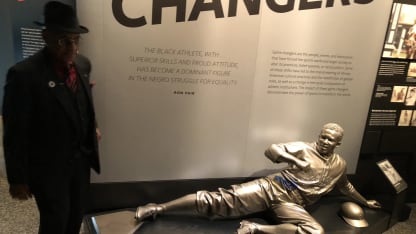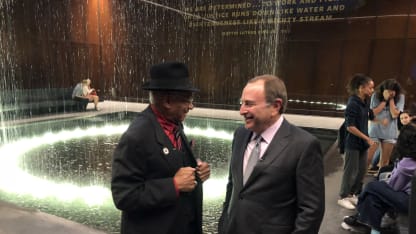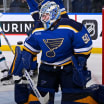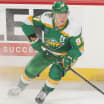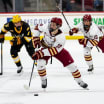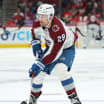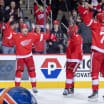O'Ree, who became the NHL's first black player on Jan. 18, 1958 with the Boston Bruins, saw the replica chairs from Ebbets Field in Brooklyn and the enlarged photo behind them of Jackie Robinson kneeling on deck at a game in Atlanta and thought back to when he was 14 years old in 1949.
RELATED: [Hockey is For Everyone coverage]
It was then, on a trip to Ebbets Field with his youth baseball team from Fredricton, New Brunswick, that O'Ree was introduced to Robinson, who broke Major League Baseball's color barrier with the Brooklyn Dodgers on April 15, 1947.
"Went to the game, met Mr. Robinson after down in the dugout, shook hands with him and told him that I not only played baseball but I also played hockey," O'Ree said. "He remarked that, 'I didn't know that there were any black kids playing hockey.' So, I said, 'Yeah, there's a few.' It was a big experience for me and a good learning mark."
O'Ree, the NHL's Diversity Ambassador for the Hockey Is For Everyone initiative, and NHL Commissioner Gary Bettman were given the tour of the museum by it curator of sports, Damion Thomas.
